 March 11, 2021 John E. Ross, KD8IDJ, Editor
| ||||||
ARRL to Have Two Exhibits at this Weekend's QSO Today Virtual Ham Expo The QSO Today Virtual Ham Expo takes place this weekend, March 13 -- 14, 2021. Thousands have already registered to participate. ARRL, a QSO Today Expo Partner, will have two exhibits at the show. The Expo has a packed lineup of 87 speakers and workshops spread across 10 different virtual theaters. March 13 and 14 sessions start at 1600 UTC. Presentation topics will appeal to amateur radio newcomers and veterans alike. Because it's impossible to watch all the live presentations of interest, attendees can return to the platform any time through April 12 to see any presentations. A full-day track on "Amateur Space Radio" will cover beginner to advanced levels. The Expo's Youth Forum on Sunday morning will be Other Expo features include:
Those who want to explore the Virtual Ham Expo offerings in advance of the show should check out the several podcasts starting at 0200 UTC on Saturday (Friday, March 12, in US time zones) from the Podcasting Pavilion, as well as a Techno Dance Party After Hours from the Amateur Space Radio Auditorium. Visit the QSO Today Ham Expo website for more information about the expo and tickets. There's still time to get early-bird discounted tickets ($10); the price of admission increases to $12.50 on March 12. Registration Now Open for HamSCI Workshop 2021 Registration is now open for the 2021 HamSCI Workshop, Friday and Saturday, March 19 - 20. The theme of this year's workshop is midlatitude ionospheric science. The University of Scranton will serve as host for the Zoom virtual event, sponsored by the National Science Foundation (NSF). The program will include guest speakers, poster presentations, and demonstrations. The workshop will also serve as a team meeting for the HamSCI Personal Space Weather Station project, funded by an NSF grant to University of Scranton physics and electrical engineering professor The workshop's keynote address on the "History of Radio" will be given by Elizabeth Bruton, curator of technology and engineering at the Science Museum of London. She will discuss the history, science, technology, and licensing of radio amateur communities from the early 1900s to the present, exploring how individuals and communities contributed to "citizen science" long before the term entered popular usage in the 1990s. Bruton has been a non-licensed member of Oxford and District Amateur Radio Society since 2014 and has served as the society's web manager since 2015. J. Michael Ruohoniemi, a professor of electrical and computer engineering at Virginia Tech and principal investigator of the Virginia Tech SuperDARN Initiative, will review the physics of the midlatitude ionosphere and discuss ways in which the amateur radio community can contribute to advancing scientific understanding and technical capabilities. Joe Dzekevich, K1YOW, will present "Amateur Radio Observations and The Science of Midlatitude Sporadic E." Read an expanded version. -- University of Scranton news release ARRL Podcasts Schedule
The On the Air and Eclectic Tech podcasts are sponsored by Icom. Both podcasts are available on iTunes (iOS) and Stitcher (Android), as well as on Blubrry -- On the Air | Eclectic Tech. News Conference Details ARISS Efforts to Return ISS Ham Station to the Air At a March 10 news conference, Amateur Radio on the International Space Station (ARISS) reported that, so far, all efforts to determine what's keeping the ham station in the ISS Columbus module off the air have been unsuccessful. It appears that the radio equipment is working, but no signal appears to be reaching the external ARISS antenna. The station, typically operated as NA1SS, has not been "There is still that possibility that there might be a problem with the radio," he said. Bauer listed three possible problem areas: The HMU-898 cable inside the cabin may have a break due to a previous tight turn, a connector may be installed improperly, or an HMU-601 cable installation or workmanship anomaly. During the January 27 EVA, the HMU-601 cable was installed in series with the ARISS antenna cable. During a March 13 spacewalk (EVA), astronauts Mike Hopkins, KF5LJG, and Victor Glover, KI5BKC, plan to return the ARISS antenna feed line cabling to its configuration prior to the January 27 spacewalk. The news conference covered details of the cable troubleshooting already conducted. Bauer said the ARISS team has been working closely with NASA and the ESA to identify what may have caused the "radio anomaly" keeping the ISS Columbus module ham station off the air. He thanked ARISS-Russia's Sergey Samburov, RV3DR, for allowing ARISS to use the ham station in the service module to This past week, astronauts on the ISS performed troubleshooting tests on all four new feed lines installed on the Columbus module. One cable was earmarked for the ARISS station, while the other three are for Bartolomeo. ARISS reported over the weekend, however, that it was unable to establish communication using any of the feed line cables connected to the ARISS radio system, which was tested in APRS mode. The plan to return the ARISS cabling to its original configuration was a "contingency task" for a March 5 spacewalk, but the astronauts ran out of time. ARISS became aware of the station problem after a contact with a school in Wyoming, between ON4ISS on Earth and Hopkins at NA1SS, had to abort when no downlink signal was heard. For the time being, ARISS school and group contacts with crew members have been conducted using the ham station in the ISS service module. Plans Proceeding for Fall 2021 Willis Island DXpedition The team from the Hellenic Amateur Radio Association of Australia (HARAOA) that's planning a November 3 - 13 DXpedition to Willis Island (VK9HR) has expanded by one, and the DXpedition planning is on schedule. A vessel to take the team to Willis Island has been chartered to leave Australia on November 3, returning on November "With time away from jobs a consideration for the operators, Mellish is being put off to 2022," said team leader John Chalkiarakis, VK3YP. While the call sign VK9HR is expected to be renewed in August, Chalkiarakis is trying to get VK9W. "VK9IR will be an additional call sign to be allocated," he said. VK9IR and VK9HR were used for HARAOA's 2011 DXpedition to Lord Howe Island. Team members for this fall's DXpedition will hail from Australia and New Zealand. They're in the process of obtaining a permit from Parks Australia, which is "required to 'camp' at these Australian Coral Sea marine parks." Chalkiarakis said the most important document is the landing permit, also from Parks Australia. No permit is required to visit these coral sea islands for non-commercial purposes, but a permit application is needed to set up a campsite and to stay overnight on the island. The now eight-operator team plans to use verticals on 160, 80, 40, and 30 meters, while VDAs (vertical dipole arrays) will be used on 20, 17, 15, 12, and 10 meters. Operation on 6 meters is under consideration. A DXpedition website and logo are in the works. Home to a meteorological station, Willis Island is in the Coral Sea, off the northeast coast of Australia. Chalkiarakis also said that he and some friends have been trying to obtain a landing permit for Macquarie Island (VK0M), which is #12 on Club Log's DXCC Most Wanted List, but he conceded that it's nearly impossible to get permission from the Tasmania Parks and Wildlife Service because Macquarie is a protected nature reserve. -- Thanks to The Daily DX The 23-Centimeter Band in Region 1 Under Discussion Ahead of WRC-23 In advance of World Radiocommunication Conference 23 (WRC-23), the amateur radio allocation at 1240 - 1300 MHz (23 centimeters) remains in the spotlight in International Telecommunication Union (ITU) Region 1 (Europe, the Middle East, and Africa). Chair of International Amateur Radio Union (IARU) Region 1 Spectrum Affairs Barry Lewis, G4SJH, reported that preparatory work continued during the February 15 - 19 meeting of ITU-R Working Party 4C. Also representing the "This information is vital to ensure the amateur services are realistically represented in the studies as they move forward," Lewis said. "It remains vital that national amateur communities present their views on the importance of this band to their national regulators in a consolidated and consistent manner." To assist, IARU Region 1 is developing supporting material that member societies can refer to when addressing the topic with national regulators. Work on this topic will continue throughout the year and beyond, both in ITU-R and in the Regional Telecommunications Organizations (RTOs). The Summary Meeting Report for the Working Party 4C meeting says, "The only administration that can be considered supportive toward proper treatment of the Amateur Services in this work is Germany." It encouraged support from outside Europe. Working Party 4C will meet again in July. -- Thanks to AMSAT News Service and AMSAT-UK ARRL Learning Network Webinars Visit the ARRL Learning Network (a members-only benefit) to register, check on upcoming webinars, and to view previously recorded sessions. The Art and Science of Operating Ultra-Portable -- Mike Molina, KN6EZE Ultra-portable operation, or being able to carry your radio over distances (e.g., in a backpack), is quickly growing in popularity. Whether for SOTA, POTA, backcountry survival, or just spending time in nature, learning how to operate ultra-portable is a fun and rewarding experience. In this presentation, Mike, KN6EZE, will cover the basics of ultra-portable operating for both the new and experienced ham radio operator. Tuesday, April 6, 2021 @ 8 PM EDT (0000 UTC on Friday, April 7) Finding and Fixing RFI -- Paul Cianciolo, W1VLF RFI (Radio Frequency Interference) has been a problem for ham radio operators and shortwave listeners since the radio hobby began. Interference can come from both natural sources (QRN) and manmade sources (QRM). Things have changed in the last 20 years with the advent of widespread solar power, LED lightning, grow lights, digital computing devices, and so on. Learn all about finding and fixing RFI in today's world. Tuesday, April 20, 2021 @ 1 PM EDT (1700 UTC) The ARRL Learning Network schedule is subject to change. February 2021 Volunteer Monitor Program Report The Volunteer Monitor (VM) Program is a joint initiative between ARRL and the FCC to enhance compliance in the Amateur Radio Service. To date, Volunteer Monitors during February reported 1,762 hours monitoring the HF frequencies and 2,158 hours monitoring VHF
The Volunteer Monitor Program Administrator had two meetings during February with FCC Enforcement Bureau personnel. -- Thanks to Riley Hollingsworth, K4ZDH, VM Program Administrator Monster Dipole Can Deliver Monster Signal A video shows how Gary Watson, ZL3SV, in Nelson, New Zealand, installed an enormous all-band dipole with each leg extending 320 meters (about 1,050 feet). The antenna is multiple wavelengths on HF, and on 20 meters it has a gain of more than 16 dB, Watson says. It hears quite well, too. A huge 12:1 balun resembling a utility pole power step-down transformer converts the impedance from 50 ohms unbalanced to 600 ohms balanced. The wire he uses for each leg is aluminum-wrapped, power- Watson said he made the 600 ohm ladder line himself and he uses the antenna on all bands, typically running only 200 W. The coaxial feed line goes to his house down a slope from the antenna via a conduit. His home is entirely off the grid, powered by solar power. The noise level is very low at his location, with power lines some distance away, although his solar power system's inverter is nearby. Watson says he can copy stations with the "monster" antenna that remain undetectable with a half-wave dipole. Amateur Radio in the News ARRL Public Information Officers, Coordinators, and many other member-volunteers help keep amateur radio and ARRL in the news.
Share any amateur radio media hits you spot with us. Announcements
In Brief...
The K7RA Solar Update Tad Cook, K7RA, Seattle, reports: Although solar activity remains low lately, as a sunspot rotates to the west off the visible solar disc, a new one will emerge in the east. Sunspot group 2807 will soon move over the sun's western horizon, but on March 9 new sunspot group 2808 moved over the eastern horizon.
Solar wind has slackened, so average daily planetary A index went from 14.7 to 7.6, and the middle latitude numbers changed from 10.4 to 6.1. Predicted solar flux for the next 30 days is 79 on March 11 - 13; 78 on March 14 - 18; 76, 75, 76, 78, and 81 on March 19 - 23; 80 on March 24 - 25; 78 and 76 on March 26 - 27; 75 on March 28 - April 1; 78 on April 2 - 3, and 70, 74, 76, 72, 71, and 72 on April 4 - 9. After April 18, solar flux may rise again above 80. Predicted planetary A index is 5 on March 11 - 12; 10, 20, and 10 on March 13 - 15; 5 on March 16 - 18; 20 on March 19 - 20; 18, 12, and 8 on March 21 - 23; 5 on March 24 - 27; 25, 20, 20, and 10 on March 28 - 31; 5, 15, and 8 on April 1 - 3; 5 on April 4 - 7, and 18 and 12 on April 8 - 9. An active region may rotate into a geo-effective position on April 15 - 16 and another around April 24 - 25. Aurora season has returned in Colorado. Sunspot numbers for March 4 - 10, 2021 were 32, 14, 23, 14, 12, 23, and 11, with a mean of 18.9. The 10.7-centimeter flux was 81.4, 73.2, 77, 77.5, 79.9, 83.7, and 79.4, with a mean of 76.7. Estimated planetary A indices were 11, 5, 16, 10, 6, 3, and 2, with a mean of 14.7. Middle latitude A index was 11, 5, 11, 7, 5, 2, and 2, with a mean of 10.4. A comprehensive K7RA Solar Update is posted Fridays on the ARRL website. For more information concerning radio propagation, visit the ARRL Technical Information Service, read "What the Numbers Mean...," and check out K9LA's Propagation Page. A propagation bulletin archive is available. For customizable propagation charts, visit the VOACAP Online for Ham Radio website. Share your reports and observations. Just Ahead in Radiosport
Upcoming ARRL Section, State, and Division Conventions Many conventions and hamfests have been canceled or postponed due to the coronavirus pandemic. Check the calendar of canceled events on the ARRL website.
Find conventions and hamfests in your area.
ARRL -- Your One-Stop Resource for . .
Subscribe to...
Free of charge to ARRL members...
| ||||||
 One will offer opportunities to meet ARRL Lab engineers, who will answer questions and share tips on an array of topics. ARRL CEO David Minster, NA2AA, will deliver the Expo's keynote address at 2000 UTC on Saturday, March 13.
One will offer opportunities to meet ARRL Lab engineers, who will answer questions and share tips on an array of topics. ARRL CEO David Minster, NA2AA, will deliver the Expo's keynote address at 2000 UTC on Saturday, March 13. organized by Carole Perry, WB2MGP. Advanced presentation topics will include "Pipeline Type Radio Wave Propagation" and "Double Inverted HF Delta Skeleton Slot Antenna." Less-experienced hams may want to watch such presentations as "Getting Started in Remote HF Operating" and "An Overview of Parks on the Air."
organized by Carole Perry, WB2MGP. Advanced presentation topics will include "Pipeline Type Radio Wave Propagation" and "Double Inverted HF Delta Skeleton Slot Antenna." Less-experienced hams may want to watch such presentations as "Getting Started in Remote HF Operating" and "An Overview of Parks on the Air." popular amateur radio manufacturers and suppliers.
popular amateur radio manufacturers and suppliers.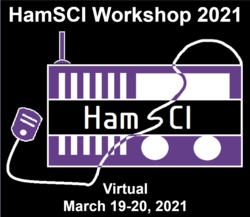 Nathaniel Frissell, W2NAF. The project seeks to harness the power of an amateur radio network to better understand and measure the effects of weather in the upper levels of Earth's atmosphere.
Nathaniel Frissell, W2NAF. The project seeks to harness the power of an amateur radio network to better understand and measure the effects of weather in the upper levels of Earth's atmosphere..jpg) The latest episode of the On the Air podcast (Episode 15) features a conversation with propagation expert Carl Luetzelschwab, K9LA, about what to expect in the new solar cycle.
The latest episode of the On the Air podcast (Episode 15) features a conversation with propagation expert Carl Luetzelschwab, K9LA, about what to expect in the new solar cycle..jpg) The latest edition of Eclectic Tech (Episode 29) is a chat with Kristina Collins, KD8OXT, about how amateurs have participated in ionospheric research during recent solar eclipses.
The latest edition of Eclectic Tech (Episode 29) is a chat with Kristina Collins, KD8OXT, about how amateurs have participated in ionospheric research during recent solar eclipses.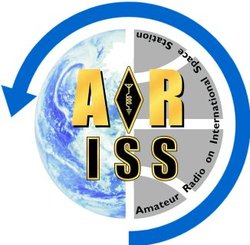 usable since new RF cables were installed during a January 27 spacewalk (EVA) to support the commissioning of the
usable since new RF cables were installed during a January 27 spacewalk (EVA) to support the commissioning of the 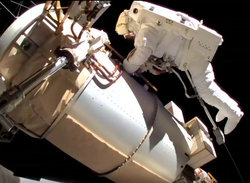 continue its contact schedule.
continue its contact schedule.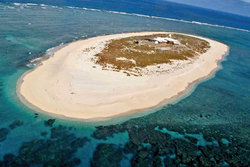 13. Willis ranks #38 on Club Log's
13. Willis ranks #38 on Club Log's  Activity is expected on SSB, CW, and FT8 on 160 through 10 meters. The equipment complement is expected to be Kenwood TS-590S and Icom IC-7300 transceivers with amplifiers on all.
Activity is expected on SSB, CW, and FT8 on 160 through 10 meters. The equipment complement is expected to be Kenwood TS-590S and Icom IC-7300 transceivers with amplifiers on all..JPG) IARU was Ole Garpestad, LA2RR, with other IARU members present within national delegations from Australia, Brazil, Canada, and the US. The 23-centimeter WRC agenda item has initiated technical studies focusing on coexistence between the amateur services and the Galileo GPS (radio navigation satellite service, or RNSS). The IARU took part in the meeting, presenting key information on amateur activities in this microwave band.
IARU was Ole Garpestad, LA2RR, with other IARU members present within national delegations from Australia, Brazil, Canada, and the US. The 23-centimeter WRC agenda item has initiated technical studies focusing on coexistence between the amateur services and the Galileo GPS (radio navigation satellite service, or RNSS). The IARU took part in the meeting, presenting key information on amateur activities in this microwave band.
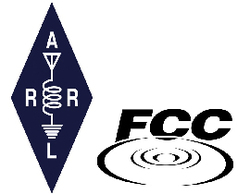 frequencies and above. The Volunteer Monitor Program Administrator issued 10 Advisory Notices. An Advisory Notice is an attempt to resolve rule violation issues informally before FCC intervention.
frequencies and above. The Volunteer Monitor Program Administrator issued 10 Advisory Notices. An Advisory Notice is an attempt to resolve rule violation issues informally before FCC intervention.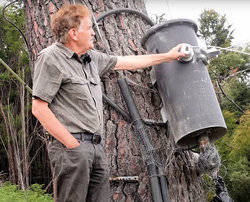 line cable (10-millimeter cable with wrap), and he uses power-line fittings, because they're designed to handle the wire. The line has a 60-ton breaking strength.
line cable (10-millimeter cable with wrap), and he uses power-line fittings, because they're designed to handle the wire. The line has a 60-ton breaking strength..jpg) ARRL Life Member Bob Leo, W7LR, of Bozeman, Montana, turned 100 years old on February 26. He has been a radio amateur for 88 years and is well known as a DXer and DXpeditioner. He has detailed his biography and ham radio exploits on his QRZ.com
ARRL Life Member Bob Leo, W7LR, of Bozeman, Montana, turned 100 years old on February 26. He has been a radio amateur for 88 years and is well known as a DXer and DXpeditioner. He has detailed his biography and ham radio exploits on his QRZ.com 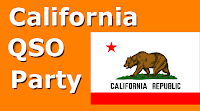 Results of the 2020 California QSO Party are now
Results of the 2020 California QSO Party are now .jpg) Results Available for ARRL Contests The full results of the 2020
Results Available for ARRL Contests The full results of the 2020 .JPG) Ham Bootcamp Program to Be Offered in April The Nashua Area Radio Society (
Ham Bootcamp Program to Be Offered in April The Nashua Area Radio Society (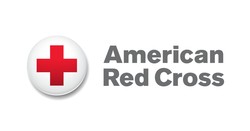 Spring Red Cross Emergency Communications Drill Set The spring 2021 Red Cross Nationwide Emergency Communications Winlink Drill will be held on May 8, which is
Spring Red Cross Emergency Communications Drill Set The spring 2021 Red Cross Nationwide Emergency Communications Winlink Drill will be held on May 8, which is .jpg) Chattanooga-Area Hams Seek Community During Pandemic The Chattanooga Times Free Press
Chattanooga-Area Hams Seek Community During Pandemic The Chattanooga Times Free Press 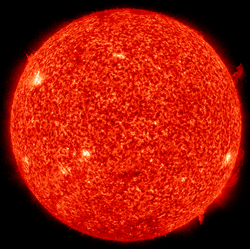 Average daily sunspot numbers this week hardly changed, from 18.9 to 18.4. Average daily solar flux shifted from 76.7 to 78.9.
Average daily sunspot numbers this week hardly changed, from 18.9 to 18.4. Average daily solar flux shifted from 76.7 to 78.9.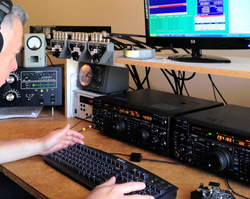 March 13 - 14 -- EA PSK63 Contest
March 13 - 14 -- EA PSK63 Contest.jpg)








